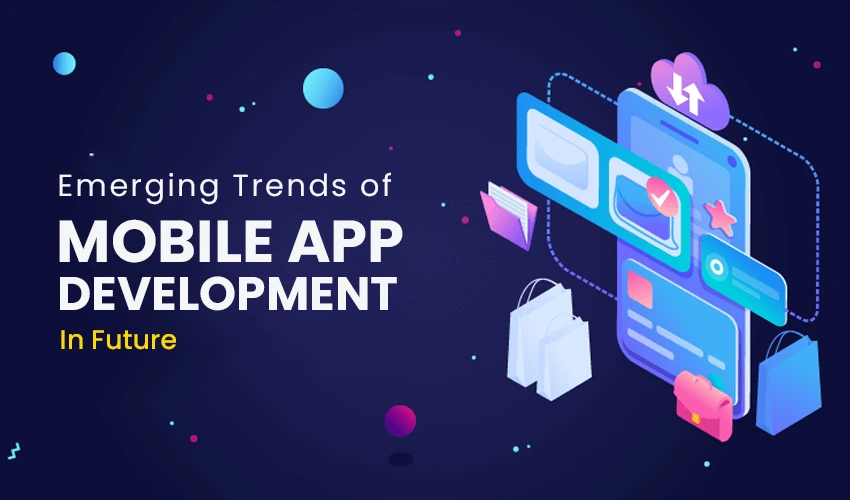The Latest Trends in Mobile App Development
It is intriguing to examine the dynamic field of mobile app creation. The mobile experience is going to be more efficient and engaging because of the dynamic adjustments and innovations that have occurred in the industry over the past few years. We examine the most recent developments that have influenced the ecosystem for mobile app development in this post.
5G Integration
Over the past few years, the adoption of 5G technology has emerged as a key factor in transforming the mobile app development industry. With its extraordinary speed and incredibly low latency. 5G has completely changed the way people experience mobile technology. By utilizing 5G’s lightning-fast data transfer capabilities. Developers can provide immersive content streaming and real-time interactivity. In addition to improving the functionality of already-existing applications. This game-changing technology is creating the groundwork for novel approaches that make the most of increased connection. The mobile app developer community is embracing this high-speed revolution as 5G infrastructure spreads internationally, ushering in a new era of data-intensive, frictionless, and responsive applications.
Cross-Platform Development
The field of developing mobile apps has seen a significant shift with the emergence of cross-platform development. The emergence of frameworks such as React Native and Flutter has enabled developers to write code that functions flawlessly across various platforms. Most notably iOS and Android. By using this method, development time and costs are greatly decreased. And a consistent user experience is maintained across various devices. Businesses are using cross-platform tactics more often to reach a wider audience and simplify app upkeep. Cross-platform development’s efficiency and flexibility allow developers to concentrate on innovation rather than platform-specific details. Creating an environment that is more dynamic and agile for app development. Cross-platform development will continue to be important in determining how mobile app development will progress in the future as technology develops.
Augmented Reality (AR) and Virtual Reality (VR)
Virtual reality (VR) and augmented reality (AR) have cemented their roles as game-changing technologies in the tech industry. AR enhances users’ surroundings by overlapping digital content onto the actual world, whereas VR submerges users in fully digital situations. Both technologies have found use in a variety of industries over the past year, expanding beyond their original gaming and entertainment applications. AR provides a fresh perspective on diagnosis while supporting surgeries and medical education in the healthcare industry. VR has transformed training for employees by making realistic simulations available to a wide range of sectors.AR and VR are redefining user experiences and creating waves in education, retail, and other industries as the lines between the physical and digital worlds become increasingly blurred. The dynamic pair of AR and VR is not just a fad; rather, it represents an ideal change that will influence how humans engage with technology going forward.
Artificial Intelligence (AI) and Machine Learning (ML)
Redefining industries and experiences, artificial intelligence (AI) and machine learning (ML) are at the forefront of technological innovation. Systems that formerly required human cognition can now accomplish tasks thanks to AI, which simulates human intellect in machines. A subtype of artificial intelligence called machine learning allows computers to learn from experience and get better without explicit programming. These technologies have advanced significantly in the last year. Impacting everything from predictive analytics in business to individualized user experiences in mobile apps. In addition to increasing productivity, the combination of AI and ML is accelerating innovations in a variety of fields. Including finance and healthcare. The voyage of AI and ML continues as we commemorate the first anniversary of technical advancement. Promising a future where intelligent robots supplement and elevate our daily life.
Internet of Things (IoT) Integration
Modern technology has made Internet of Things (IoT) integration the foundation, transforming the way devices interact and communicate. Mobile app developers are adding more and more IoT features to their apps to improve user experiences as the IoT ecosystem grows. Users can effortlessly operate and monitor linked devices with ease thanks to the seamless integration of IoT into mobile apps, which span from smart homes to industrial applications.By working together, this synergy makes the environment more responsive and connected, opening up new opportunities for automation and data-driven insights. The development of creative and connected digital experiences is still largely dependent on the incorporation of IoT technology into mobile applications, even as the landscape of IoT continues to change.
Mobile Wallets and Contactless Payments
The way we conduct transactions has been completely transformed by contactless payments and mobile wallets. These technologies have grown at an unprecedented rate in the last year due to a global movement toward contactless transactions. Mobile wallets have improved security measures, biometric authentication. And simplified user interfaces that make them a safe and practical substitute for conventional payment methods. Companies are incorporating these solutions into their apps more and more to give users smooth. Cashless experiences that keep up with the changing needs of the rapidly evolving digital landscape.
Progressive Web Apps (PWAs)
The world of mobile apps has changed dramatically with the introduction of Progressive Web Apps (PWAs). PWAs, which blur the boundaries between mobile apps and standard websites, provide users with an app-like experience with features like push notifications, offline access, and quicker load times. They are accessible on different devices because of their responsive design, which improves the user experience. Businesses may now seamlessly connect the web and app environments by utilizing PWAs, giving their audience a contemporary and captivating platform.
Conclusion
The mobile app development market is changing quickly as we look back on the previous year. The mobile landscape is changing due to the integration of 5G, and advances in cross-platform development. The emergence of AR and VR, and the widespread effect of AI, ML, and IoT. For developers and businesses to produce cutting-edge. User-focused apps that meet the dynamic needs of the digital era, must be aware of these trends. We can only expect more fascinating discoveries shortly as the mobile app market continues to grow.

